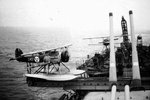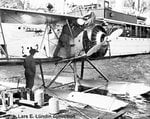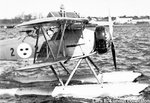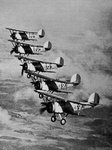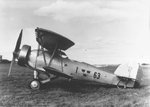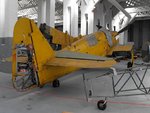- Thread starter
- #41
The Hawker Osprey was the navalised carrier-borne version of the Hart, performing in the fighter and reconnaissance roles. The Osprey had a single Rolls-Royce Kestrel II engine, and had a max speed of 168 mph (270 km/h). Its armament consisted of a single forward .303 in (7.7 mm) Vickers machine gun and one .303 in (7.7 mm) Lewis gun. The Osprey joined the Fleet Air Arm (FAA) in 1932, with just over 100 being built, and ended its career in 1944 after serving as a trainer for FAA pilots during her career in the Second World War. The Osprey was also sold to the Swedish Air Force being used on the seaplane cruiser HMS Gotland, which carried six Ospreys. The aircrafts sent to Sweden were Mercury-powered Ospreys, known as Nohabs. These remained operational as naval co-operation aircraft alongside Heinkel He 5s until 1940.
Source: Hawker Osprey - reconnaissance, spotter aircraft, Hawker Hart - Wikipedia, the free encyclopedia
Source: Hawker Osprey - reconnaissance, spotter aircraft, Hawker Hart - Wikipedia, the free encyclopedia
Attachments
Last edited:

